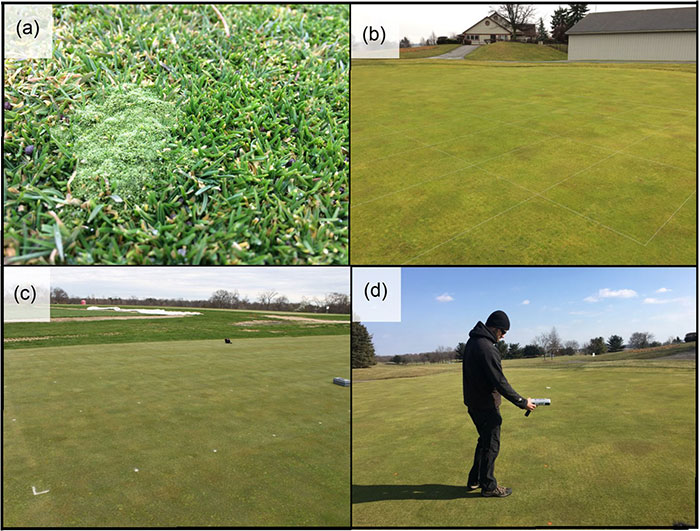Off the Record: New bentgrasses to celebrate USGA Green Section 100th Anniversary
Editor’s note: Piper and Oakley will be distributed by Mountain View Seed. Kenna is a consultant for the company.

Photo: Mike Kenna
Rutgers University and the USGA are working together to release two new creeping bentgrasses. Piper and Oakley bentgrass will celebrate the 100th anniversary of the Green Section. Charles V. Piper and Russell A. Oakley were instrumental in the early days of the Green Section.
Piper and Oakley were well-known U.S. Department of Agriculture experts on grasses. In 1906, a golfer named Dr. W.S. Harban went to Piper and Oakley for help with turfgrass problems at his course. Later, golf course architect C.B. MacDonald asked Piper and Oakley for help growing grass at the National Golf Links of America. Hugh Wilson also sought their assistance while establishing Merion Golf and Cricket Club. This need for information led to the 1917 publication of Turf for Golf Courses by Piper and Oakley.
In 1920, E.J. Marshall of the Inverness Club in Toledo, Ohio, saw
a need for help solving turf problems on golf courses. Along with Hugh
Wilson and other golf enthusiasts, Marshall’s passion convinced the USGA Executive Committee to establish the Green Section on Nov. 20, 1920. On Feb. 10, 1921, Piper and Oakley published the first issue of The Bulletin of the Green Section.
From the beginning, Piper and Oakley worked with bentgrass. They established the Arlington Turf Garden at the USDA’s Arlington Experiment Farm. This early research location is where the Pentagon is today. The USGA contributed a large part of the funds for its pioneering turf research. By the 1930s, 30,000 square feet were at putting green height. Early work was on stolon plantings of creeping, velvet and colonial bentgrass strains. There also were plots of various grasses obtained from different bentgrass seed sources.
The Green Section recommended bentgrasses and fine fescues for greens on northern courses. Seeded types included South German, Rhode Island and colonial bentgrass. Greenkeepers sent promising bentgrass strains to Piper and Oakley from several early golf course greens established by seed.
By the 1930s, John Monteith Jr., Ph.D., and Fred V. Grau conducted the “pie green” experiments across the country. These experimental greens had 12 or more wedge-shaped sections. Each section had a different strain of the C series of creeping bentgrass. Cohansey, Congressional and Toronto are three creeping bentgrasses that arose from this national test.
Professor H.B. “Burt” Musser, Pennsylvania State University, became interested in the grasses available for golf courses. Seaside, Astoria, Highland or colonial were the seeded bents of the 1930s and 1940s. He wrote that they all contained many individual types, some of which were good and some poor. There was no effort made to breed out the weak plants. So, the turf produced by these was a composite and represented the average for the species.
In 1937, Musser began research on bentgrass leading to the 1954 release of Penncross. He attempted to concentrate on desirable qualities and reduce weaknesses by controlled breeding. Penncross received favorable performance reports over an extensive range of conditions. The variety also outperformed the other seeded bentgrasses, and it had a more comprehensive range of adaptability than individual vegetative strains. These traits made Penncross the most popular putting green variety for 30 years.
In 1959, Musser retired, and his graduate student, Joseph Duich, Ph.D., continued breeding bentgrasses. He released Penneagle in the 1970s and Pennlinks in the 1980s.
The USGA Green Section increased its support of turfgrass research in 1983. Interest in improved bentgrasses for putting greens and fairways led to a rapid increase in new varieties. Dick Skogley, Ph.D., the University of Rhode Island, released Providence for northern climates. Dr. Robert Kneebone licensed his heat-tolerant bentgrasses for SR1020. Milt Engelke, Ph.D., Texas A&M University, released Crenshaw and Cato. Unfortunately, many of the Texas A&M grasses were very susceptible to dollar spot.












